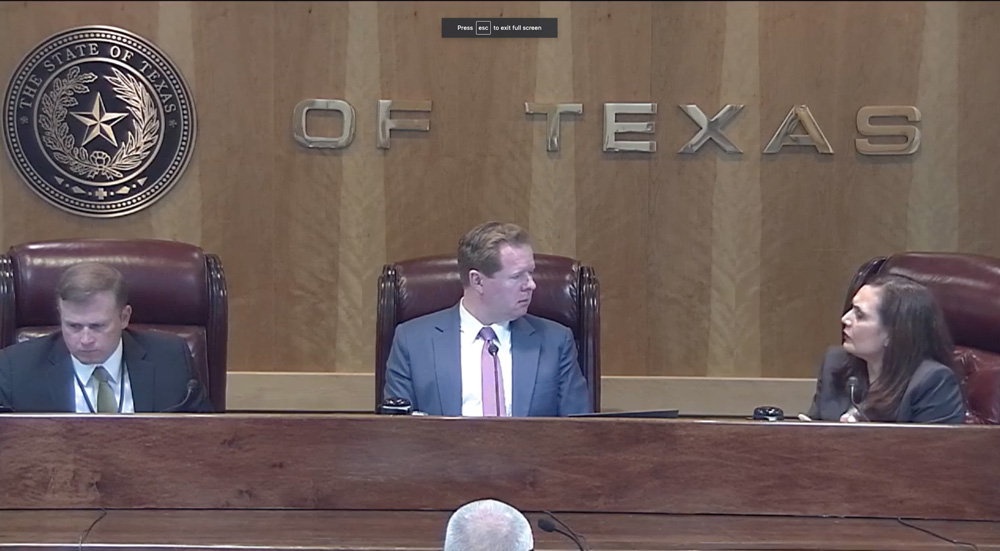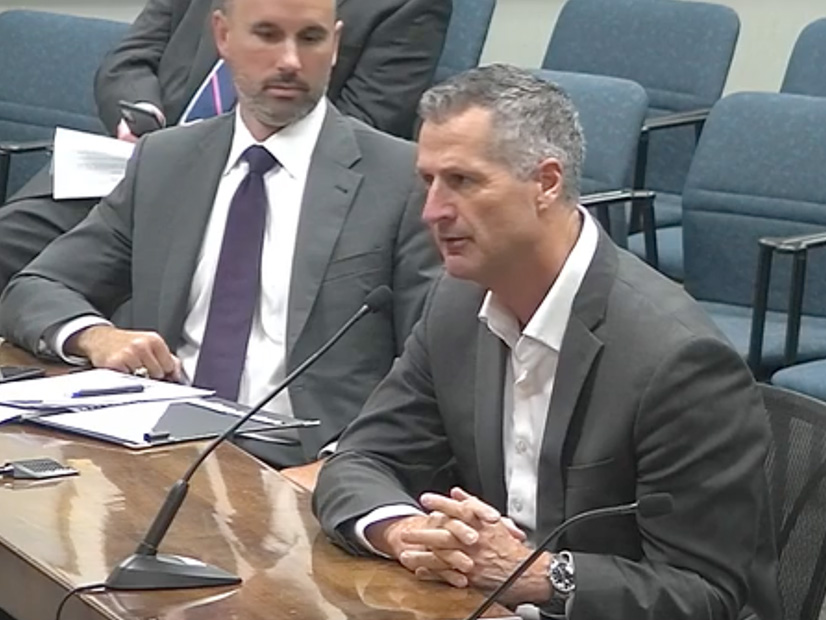ERCOT CEO Jones Adds Details to Grid Reliability Roadmap
The new members of the Texas Public Utility Commission have quickly learned that redesigning ERCOT’s deregulated market to add dispatchable generation and accommodate renewable energy will be a daunting task.
As Commissioner Will McAdams put it during the PUC’s open meeting last Thursday, “The commission staff, the staff at ERCOT — it’s fair to say we’re all living on coffee and anger right now with the workload in front of us and reaffirming public confidence in the grid.”
The comments drew a laugh, but the commissioners are serious about getting started on the work that lies ahead. To that end, Commissioner Lori Cobos, fresh off a successful confirmation hearing before the Texas Senate, asked Brad Jones, ERCOT’s interim CEO, to update the PUC on the grid operator’s plans to ensure reliability this summer and its 60-point roadmap to grid reliability. (See ERCOT Issues ‘Roadmap to Grid Reliability’.)
Jones said he has been working on the Roadmap to Improving Grid Reliability for many weeks, leveraging his many relationships within the state to gather ideas from market participants, former regulators, environmentalists and other stakeholders.
“This list is not my list; it’s not ERCOT’s list. It’s the list of many advisers that have worked to put this together,” he said. “I wanted to ensure we reached out to a diverse group so we could get a lot of different ideas of what had to be done within ERCOT to improve ERCOT, and to make sure we are meeting the needs of all Texans in providing a reliable grid.”
Jones focused on three of the roadmap’s 60 items, of which 22 have now been completed, he said. Listing the item numbers from memory, he reminded the commissioners that No. 6 describes ERCOT’s more conservative approach to grid management this summer by increasing the number of operating reserves. (See ERCOT Stakeholders Sign Off on More Ancillary Services.)
“We are operating much more conservatively than we have been before,” Jones said.
Item 50, he said, while “it seems like an innocuous study” (“Conduct a study to gauge the impact of varying levels of wind and solar penetration, including the impact of energy storage and dispatchable energy, as well as revenue adequacy for each of these levels.”), is extremely important and “complete with many activities and many actions.”
Staff will have to identify what kind of dispatchable generation ERCOT needs, Jones said, and ask what attributes there are looking for.
“Is there a duration requirement? Is there a requirement for ramp speed? A requirement for how fast a unit can turn on?” he said. “Those are questions we have to answer. What do we need in the future for balancing wind and solar generation? Once we identify what that is, the question is, how do we provide revenue adequacy for that type of generation?”
Jones also labeled Item 18 as very important. It calls for a process to address transmission limitations in the Lower Rio Grande Valley, including construction of new transmission capacity.
“I believe [the Rio Grande Valley] has been underserved by transmission for more than 15 years. Throughout my career, we in the industry have struggled to make sure we are getting the right resources down to that area,” he said. “It’s a very fast growth area, and it’s been very difficult to stay ahead of that. I’ve asked our team to push in certain areas we have never pushed before.”
Jones said that would mean using the region’s frequent droughts, which can constrain transmission in the valley, as a constant scenario for planning purposes.
PUC Chair Peter Lake commended Jones on the speed and action he has taken since assuming the CEO position and for the “sea change” of conservative operations, which include reliability unit commitments.

“I know it seems it is disruptive to the industry,” McAdams said. “We are all experiencing pushback from the industry as you push forward with the new safeguards.”
Regulators Set Future Work Sessions
The PUC has set a schedule for additional work sessions as it works with ERCOT and stakeholders to turn legislation and political directives into grid protocols and requirements (51617).
The commission plans to invite testimony during the workshops, as it did recently during the first of four sessions on market design. (See PUC Debates Answers to ERCOT’s Reliability Issues.)
Cobos, relying on her previous experience before the commission, suggested staff open a project to evaluate “specific market incentives,” such as potential changes to the operating reserve demand curve, ancillary service products, and other reliability services and price incentives to increase investment in new and existing dispatchable generation.
Gov. Greg Abbott on July 6 filed a letter directing the PUC to streamline ERCOT’s market incentives for dispatchable generation.
The PUC’s current schedule of work sessions includes:
-
-
- Aug. 12: Weatherization
- Aug. 26: Market Design Part II
- Sept. 16: Water
- Oct. 14: Market Design Part III
- Nov. 4: Market Design Part IV
- Dec. 9: Emergency Operations Plan
-
Cooperative CCN Becomes Test Case
The commission used its approval of a certificate of convenience and necessity for a 138-kV Rayburn Country Electric Cooperative transmission line in North Texas to set a template for future requests from cooperatives (50812).
McAdams filed a memo before the meeting, outlining the information the PUC would need from co-ops and suggesting that the commission only approve their transmission facilities if there’s a need in the area that can’t be addressed by a distribution solution. Transmission solutions will be socialized to ERCOT ratepayers, while distribution solutions will be borne by the cooperative’s members.
“It’s a great test case. We’re going to see more of these in the future,” McAdams said.
Cobos agreed, saying McAdams’ memo highlighted the benefits of a co-op pursuing a transmission solution.
“We need to be mindful of ERCOT ratepayer costs that are laid out in every customer’s bill as a line item,” she said.
Return of the Enforcement Division
The commission, after committing to Texas lawmakers that it would reconstitute the enforcement division after it was disbanded last year, will do just that, Executive Director Thomas Gleeson told the commissioners.
The division will be headed by Barksdale English, who previously served as chief of staff to former Commissioner Arthur D’Andrea.
“He’s the right person to frame what enforcement looks like going forward, given his [expertise] on wholesale markets,” Gleeson said. Before joining the commission, English represented Austin Energy on ERCOT’s Technical Advisory Committee.
The PUC will also form a new rules division to handle the 30 or so policies it expects to implement following the recent legislative session. Staff’s David Smeltzer will be the division’s director.
PUC Approves ERCOT Changes
As part of the ERCOT-related bills passed by the Texas Legislature in May, the commission filed an order approving two nodal protocol revision requests (NPRR1080 and NPRR1081) and two other binding document revision requests (OBDRR030 and OBDRR031) that were recently passed by the grid operator’s stakeholders (52307).
NPRR1080 limits the ancillary service market’s clearing prices to the systemwide offer cap of $9,000/MWh, while NPRR1081 requires that ERCOT’s real-time online reliability deployment price adder be adjusted to take firm load shed into account. OBDRR030 accompanies NPRR1080, while OBDRR031 codifies ERCOT’s plans to deploy more operating reserves, and to do so earlier, in anticipation of tight conditions this summer. (See ERCOT Stakeholders Sign Off on More Ancillary Services.)
Effective June 8, protocol changes adopted by ERCOT are subject to commission oversight and review and may not take effect before receiving regulatory approval. New or revised protocols won’t be approved until the PUC approves a market impact statement; staff said ERCOT’s supporting documents included the impact analysis.
McAdams, Cobos to Join RSC, OMS
McAdams and Cobos will join the state regulatory committees for SPP and MISO, respectively. Both RTOs’ footprints extend into the Lone Star State.
McAdams will join RSC’s Regional State Committee, while Cobos said she has agreed to take the PUC’s seat on the Organization of MISO States.
Cobos suggested the commissioners consider switching markets every couple of years so that they are cross-trained on non-ERCOT markets.
“I’m just glad you’re here,” McAdams said.




